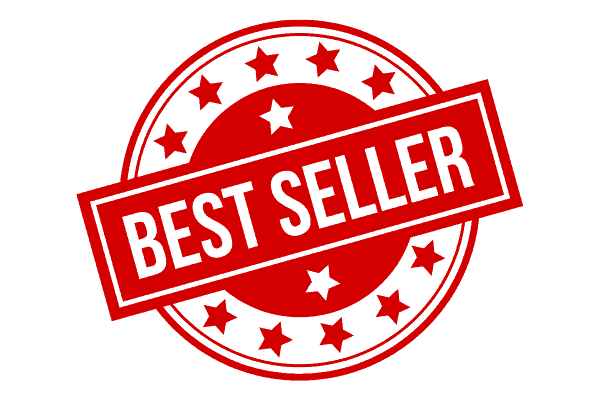5 Internal Link Building Hacks To Skyrocket Your Organic Traffic
In the world of website optimization, backlinks often steal the spotlight. However, internal links are just as crucial for boosting your organic traffic. By strategically placing internal links throughout your website, you can spread authority and link juice, ultimately skyrocketing the ranking of your pages.
In this informative video by Julian Goldie SEO titled “5 Internal Link Building Hacks To Skyrocket Your Organic Traffic,” you’ll discover various valuable tips and techniques. From linking to your money pages and optimizing anchor text to using helpful tools and leveraging internal links to drive traffic, this video covers it all.
As a bonus, Julian shares a clever lazy method that will save you time without compromising results. So, if you want to enhance your website’s performance and increase your organic traffic, be sure to tune in!
Tip #1: Link Internally to Money Pages
Internal linking is an essential aspect of search engine optimization (SEO) that often goes overlooked. When optimizing your website for better search rankings and user experience, linking internally to your money pages can be highly effective.
Money pages are the ones that generate revenue for your business, such as sales pages, lead pages, and review pages. By strategically linking to these pages from within your website, you can increase their visibility and drive more traffic.
Linking to Sales Pages
Sales pages are the lifeblood of any business. These pages are designed to convert visitors into paying customers by showcasing the benefits and features of your products or services.
By linking to your sales pages internally, you can boost their visibility and increase their chances of being discovered by potential customers. For example, you can link to your sales pages from relevant blog posts or other pages on your website that discuss related topics.
This helps search engines understand the relevance of your sales pages and directs users to take desired actions.
Linking to Lead Pages
Lead pages, also known as squeeze pages or landing pages, are designed to capture visitor information, usually in exchange for valuable content or offers. These pages are crucial for growing your email list and generating leads for your business.
By strategically linking to your lead pages from within your website, you can increase the chances of visitors finding and opting into your offers. For instance, you can include prominent calls-to-action (CTAs) that link to your lead pages on your homepage, sidebar, or relevant blog posts.
This helps to maximize the visibility and effectiveness of your lead generation efforts.
Linking to Review Pages
Review pages play a significant role in building credibility and trust with your audience. These pages provide unbiased reviews and recommendations of products or services relevant to your niche.
By linking internally to your review pages, you can enhance their visibility and increase the chances of visitors finding them when conducting research. For example, you can link to your review pages from related blog posts or product/service descriptions.
This helps your audience make informed decisions and showcases your expertise in the field.
Tip #2: Optimize Anchor Text
Anchor text refers to the clickable text in a hyperlink. It plays a crucial role in SEO as search engines use it to understand the content and relevance of the linked page. Optimizing anchor text when linking internally can help improve your website’s visibility and rankings.
Google’s Leniency with Internal Links
Unlike external links, Google is more lenient with using anchor text for internal links. While it is still important to use relevant and descriptive anchor text, the search engine is more forgiving if you occasionally use generic phrases like “click here” or “read more.”
However, it is still recommended to use anchor text that accurately describes the linked page and adds value to the user experience.
Specific Anchor Text for Relevant Descriptions
To maximize the effectiveness of your internal links, it is advisable to use specific anchor text that accurately describes the linked page’s content.
For example, instead of using a generic phrase like “click here,” you can use anchor text such as “learn more about our product,” “check out this review,” or “sign up for our newsletter.”
By providing descriptive anchor text, you make it easier for search engines and users to understand the link page’s relevance and context.
Tip #3: Use Tools for Internal Link Building
Optimizing internal links can be time-consuming, especially if you have a large website with numerous pages. That’s where tools like Link Whisper can be extremely helpful.
Benefits of Using Tools like Link Whisper
Link Whisper is a WordPress plugin that streamlines the process of internal link building. It analyzes your content, suggests relevant internal link opportunities, and allows you to add them without manual searching or editing.
This saves you valuable time and ensures consistent internal linking across your website. Moreover, Link Whisper also helps you uncover orphaned pages (pages with no internal links) and provides suggestions for linking them to relevant content, thus improving their visibility and SEO.
Recommendation to Use Link Whisper
Based on user reviews and its robust feature set, Link Whisper comes highly recommended for optimizing internal link building. Its simple yet effective interface makes it easy to use, even for beginners.
By leveraging the power of automation, Link Whisper takes the guesswork out of internal link building and helps you improve your website’s SEO and user experience.
Other Plugin Options
While Link Whisper is a fantastic tool, other internal linking plugins are available in the market. These include Yoast SEO, SEO Internal Links, and Internal Link Juicer. Each plugin offers its unique features and benefits, so it’s important to research and choose the one that best suits your needs and preferences.
Tip #4: Funnel Traffic to Money Pages
Driving traffic to your money pages is essential to maximizing conversions and revenue for your business. By strategically funneling traffic from various sources to your sales pages, review pages, lead pages, and lead magnets, you can increase their visibility and improve the chances of generating desired actions.
Importance of Driving Traffic to Money Pages
Your money pages are specifically designed to generate revenue for your business. Whether making a sale, generating leads, or capturing email addresses, driving traffic to these pages is crucial for your business’s success.
By ensuring that your money pages receive a consistent flow of targeted traffic, you can increase the likelihood of achieving your desired goals and maximizing your ROI.
Internal Linking to Sales Pages, Review Pages, Lead Pages, and Lead Magnets
One effective strategy for funneling traffic to your money pages is through internal linking. By strategically placing internal links throughout your website, you can guide visitors toward your sales pages, review pages, lead pages, and lead magnets.
For example, you can include prominent call-to-action buttons or links on your homepage, blog posts, and other relevant pages, encouraging users to explore your money pages. This drives traffic to your money pages and provides a seamless user experience, as visitors are directed to the information they are looking for.
Tip #5: Use a Lazy Method
If you don’t have the time or resources to manually optimize internal links, lazy methods and plugins can streamline the process for you.
Installing a Plugin for Recent and Featured Posts
One lazy method is to install a plugin that automatically displays your recent and featured posts on relevant pages throughout your website.
This ensures that your money pages receive consistent visibility and traffic without requiring manual internal linking. Plugins like “Recent Posts Widget Extended” or “Advanced Recent Posts” can help you set up and customize these features effortlessly.
Time-Saving and Efficient Approach
Using a lazy method saves you time and ensures that your money pages are consistently promoted on relevant pages within your website.
By automatically displaying recent and featured posts, you can increase your money pages’ visibility and click-through rates without the need for manual internal linking.
Manual Internal Linking to Money Pages
While lazy methods can be effective, they should not completely replace manual internal linking. Manual internal linking allows you to carefully curate and optimize the placement of internal links to maximize their visibility and impact.
By combining lazy methods and manual internal linking, you can achieve a well-rounded internal linking strategy that effectively drives traffic to your money pages.
Conclusion – 5 Internal Link Building Hacks To Skyrocket Your Organic Traffic
Optimizing your internal links is crucial to improving your website’s SEO and user experience. By strategically linking internally to your money pages, such as sales, lead, and review pages, you can increase their visibility and drive more traffic to them.
Specific anchor text and tools like Link Whisper can further enhance your internal link-building efforts. Additionally, funneling traffic to your money pages and utilizing lazy methods like installing plugins for recent and featured posts can save you time while driving traffic to your most important pages.
With a comprehensive approach to internal link building, you can boost your website’s authority, improve usability, and ultimately drive more conversions for your business. So, focus on optimizing your internal links and watch your website thrive!
We’re reader-supported. We may earn an affiliate commission when you buy through links on our site.

Angus Robertson is an authority in online marketing, affiliate marketing, and Search Engine Optimization (SEO). With an innate passion for the digital world, he has spent the last two decades assisting businesses in amplifying their online presence and boosting profitability.









